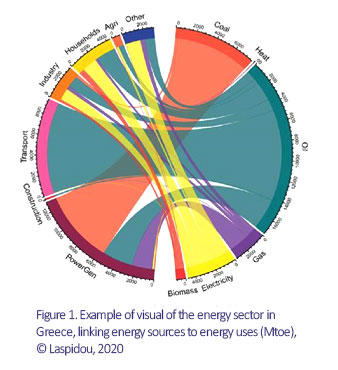The Dresden nexus conference (DNC in short) was held online on June 3-5, 2020. DNC is an international conference series dedicated to advancing research and the implementation of a Nexus Approach to resource management. This year, it focused on the concepts that nexus thinking offers to support the transition towards a circular economy.
ACTeon was present through SIM4NEXUS, a H2020 research project which started back in 2016 and is now delivering its final tools and results. The conference was enlightening and the shared experiences from hundreds of Nexus researchers or practitioners around the globe helped us gain a wider view on Nexus issues and discuss a research agenda for the coming years.
Here are our 4 take home messages from the conference, which ACTeon participants collected.
1.Sustainable management of the Nexus requires a strong and comprehensive data basis
 The resource Nexus spans over water, energy, food/biomass, land/soils, materials/minerals, and climate. Nexus studies so far dedicated many efforts into collecting, harmonizing, and storing data from a diversity of sources to understand linkages and interactions between Nexus domains.
The resource Nexus spans over water, energy, food/biomass, land/soils, materials/minerals, and climate. Nexus studies so far dedicated many efforts into collecting, harmonizing, and storing data from a diversity of sources to understand linkages and interactions between Nexus domains.
However, these studies usually focus on the collection of biophysical data whereas the socio-economic dimensions of the Nexus are too often overlooked. It should not be forgotten that economic activities are at the heart of the Nexus and that ignoring these dimensions hinders the understanding of the brakes and levers for a sustainable management of natural resources. Biodiversity and ecosystems are also still left out of many Nexus initiatives.
2.From awareness-raising to the development of decision-support tools: The Nexus approach helps bring scientific evidence on resources scarcity and resolve resource use conflicts
The implementation of a Nexus approach makes it possible to serve different levels of ambitions and objectives. The collection, centralization and visualization of data allows for an objective awareness of conflicts and synergies between sectoral policies. DNC speakers share experiences of using a Nexus approach in peace and negotiation processes, drawing attention to the sustainable management of common goods, and sorting out trustworthy information from gossip.
The development of dedicated tools allows to connect the Nexus domains and provide recommendations. As an example, the WaCCliM project has developed the Energy Performance and Carbon Assessment and Monitoring Tool (ECAM) to drive GHG emission reduction in water utilities, while keeping a strong emphasis on energy savings to reduce costs.
Circular economy and Nexus concepts remind us that growth has limits. New indicators that account better for resources scarcity are yet to be found to move away from the GDP metric. Technology progress cannot solve it all and behavioral change (including the use of rare earth material) shall be given greater attention.
At all levels of ambition, the development of innovative visual tools is central to guarantee the understanding of the complexity of the Nexus by stakeholders.
3.The Nexus concept is yet to young to find its place in the policy design process
The main goal of Nexus approaches is to improve policy coherence (horizontally across topics) and integration (vertically across administrative scales). Contributions during the DNC identified the main issues and challenges for the application of a Nexus approach in the design and implementation of public policies.
First, so far projects have little explored when, where or how to embed the Nexus approach into the policy design process.
The Nexus approach provides answers to current discussions on the trade-offs or limitations of, for instance, wastewater reuse. Water reclamation is a promising technology but, if badly ruled, could lead to increasing energy demands or have rebound effects on the abstraction of water resources. In addition, it is important to align policy thinking with scientific results by developing public policies accounting for Nexus sectors for which (futures) challenges are the highest : Issues such as land management are hardly dealt with, though it proves central for the success of many environmental objectives; water also receives too little attention.
Finally, there is no law that recognizes the resource nexus, resulting in asymmetrical norms, regulations
or planning between energy, water or land. Connections to the labelling and certification schemes shall also be further explored.
4.Future studies should better account for the constraints of a Nexus approach
In order to attract your target audience, the message shall be tailored to the public’s demand, which often means centered on one economic sector only.
A Nexus governance or “polycentric governance” does not yet exist and one dominant challenge is the building of “Community of Practices” that remain active well after a Nexus study or project.
If you are interested or working on the Nexus, contact us!

